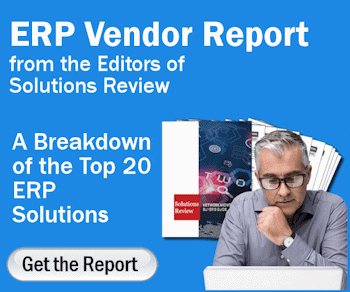Five Trends Shaping How Life Sciences Adopt AI in ERP


Juanita Schoen, an Engagement Manager at Columbus, outlines five trends currently shaping how life sciences markets are adopting AI in their ERP systems. This article originally appeared in Insight Jam, an enterprise IT community that enables human conversation on AI.
 AI in life sciences usually makes headlines for its role in drug discovery or clinical trials, but the majority of progress is actually happening behind the scenes. Enterprise resource planning (ERP) systems, which are typically responsible for finance, supply chains, and compliance, are beginning to embed intelligence in ways that directly impact how organizations operate.
AI in life sciences usually makes headlines for its role in drug discovery or clinical trials, but the majority of progress is actually happening behind the scenes. Enterprise resource planning (ERP) systems, which are typically responsible for finance, supply chains, and compliance, are beginning to embed intelligence in ways that directly impact how organizations operate.
Life sciences companies face a difficult mix of constraints. Development cycles can take 10-12 years and cost billions of dollars while FDA, GxP, and ISO standards govern every step of the process. For this reason, new technology is adopted cautiously; however, leaders can’t ignore the growing need for AI in ERP, which is becoming a differentiator for organizations seeking to operate with greater speed and efficiency.
According to recent research, 75 percent of senior executives at life sciences companies say they began AI implementation within the past two years, while 86 percent plan to adopt it within the next two years. Looking across the industry, we’ve identified five trends that provide insight into the direction of ERP and AI adoption.
1) Compliance is driving digital adoption
For pharmaceutical and medical device companies, compliance isn’t negotiable. Every decision needs to be backed by data that’s accurate, validated, and auditable. Traditionally, compliance requirements have slowed the adoption of new systems, but now they’re a reason to accelerate it.
AI within ERP can continuously monitor data integrity and flag inconsistencies as they appear. Audit trails are also automatically created and preserved, which gives regulators confidence that standards are being met without the need for endless hours of manual documentation. Leaders recognize that without robust systems, they can’t keep up with the volume of data that regulators expect them to manage, and AI-supported ERP provides a way to stay compliant while reducing the risk of costly penalties or delays.
2) Supply chain visibility matters more than ever
Global supply chains are fragile and stretch across continents. They also depend on hundreds of suppliers, and a single disruption can put patients at risk. Those weaknesses have become obvious in recent years as instability has increased. In the first quarter of 2024 alone, healthcare supply chains experienced 3,850 disruptions, which is a 40 percent YOY increase.
ERP platforms with embedded intelligence can provide leaders with a clearer view of their supply chains as they shift and evolve. AI models can regularly assess supplier reliability, track shipments across borders, and factor in external data, such as port closures or geopolitical events. When a risk is detected, the system surfaces alternatives that balance speed, quality, and cost. Traceability also satisfies regulatory expectations by maintaining detailed records that demonstrate the origin and handling of materials, thereby building confidence during inspections.
3) Archiving is now part of the long-term strategy
Few industries generate as much data as life sciences. Research, clinical trials, and manufacturing lines generate a steady stream of records that need to be stored for decades. Holding all this information in live systems slows performance and raises costs, which is why data archiving has become increasingly important.
AI can sort records by regulatory need, ensuring essential files remain accessible while older material is stored securely. Retention schedules can be set up to run automatically, so data is only released when it meets certain compliance rules.
Archiving is also critical when organizations retire legacy systems because they can’t just be switched off without protecting historical information. AI-enabled archiving makes it possible to decommission outdated platforms while keeping records intact and accessible. When handled effectively, archiving reduces costs and establishes a structured framework for long-term data stewardship.
4) Cybersecurity has risen to a board-level priority
Life sciences companies are particularly vulnerable to cyber-attacks because their ERP platforms contain a wealth of sensitive information, including intellectual property, patient data, and financial records. Adding AI introduces new points of vulnerability, since models and training data can be compromised if they aren’t secured.
For this reason, security has moved out of the IT department and into the boardroom. Only 42 percent of organizations feel like they are currently striking a balance between AI development and security investment, and leaders now regularly ask directly about identity management, access controls, and incident response. Systems need to be continuously monitored and maintained, and staff need to be trained to recognize phishing and social engineering attacks, as people are often the easiest way into an organization.
5) AI adoption depends on building trust
Early pilots of AI-enabled ERP in manufacturing have shown efficiency gains of 30 to 40 percent, and generative tools are also reducing ERP implementation effort by as much as 40 percent. Numbers like these make AI adoption attractive, but the real barrier isn’t speed or cost, but trust.
Every decision can affect patient safety, which means AI can’t be a black box. Leaders need validation processes that prove models work as intended and audit trails that explain how outputs were generated. They also need governance structures that maintain accountability with individuals instead of relying on algorithms.
Trust will determine whether AI adoption can scale beyond limited use cases. Companies that treat AI as a long-term capability, built into ERP with transparency and oversight, will be better positioned to use it responsibly. Those who move too quickly without the right guardrails risk setbacks that stall progress.
What should leaders take away?
Life sciences organizations face pressure to deliver innovation under strict regulatory control. Costs are rising, development cycles are long, and inefficiencies can threaten progress. ERP systems with embedded AI give companies a way to operate with greater confidence, but success depends on aligning adoption with the industry’s most pressing trends.
Leaders who approach AI thoughtfully and integrate it into their processes will build more resilient systems and businesses that can meet the growing complexity of global commerce and supply chains.



















